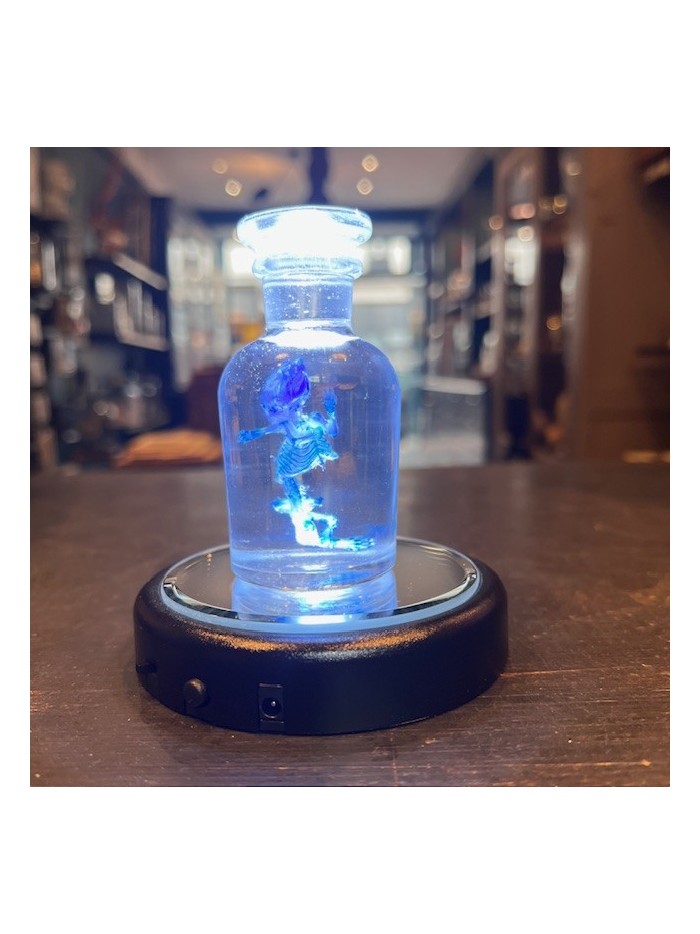- New








Diaphanization of Common mouse - Mus musculus
Please note that 1 leg of the mouse is broken, which explains the lower price.
Biological preparation
The aim of diaphanization is to render the tissues transparent through a chemical process, and specific dyes are used to highlight the skeleton.
You can see the bones through the flesh!
Diaphanization of a Common mouse skeketon: Mus musculus
The aim of diaphanization is to make the skeleton transparent so that it can be observed.
Please note that 1 leg of the mouse is broken, which explains the lower price.
The tissues are made transparent by a chemical process, and specific dyes are used to highlight the skeleton.
You can see the bones through the flesh!
This is mainly used for animals that are too small to be prepared for osteology in the conventional way, or to study ossification sequences, for example.
The jar does not contain formalin, because the specimens are fixed before they are prepared.
They are then placed in these flasks filled with pure glycerine and thymol crystals, whose function is to preserve the tissues and combat mould.
The animals are not killed to end up in these jars; they are often foetuses or stillborn animals, etc.
Bottle height: 8.5cm Diameter: 4cm
Entomological box
Hemaris fuciformis
broad-bordered bee hawk-moth
Ammonite fossil - France
Jurassic period, about 200 to 145 million years ago
Genre: Reineckeia
Entomological frame - Scarab Goliathus meleagris female with spread wings
Spearhead gypsum crystal from Seine et Marne
Shark tooth fossil
Otodus Obliquus dating from the Ypresian: 50 million years ago
Dragon Stone
Septaria egg of Madagascar
Sea Urchin Colobocentrotus atratus
Helmet urchin from Indian Ocean
3/4cm
Sorrah shark jaws - Carcharhinus sorrah
18/20cm
Madagascar sawyer ammonite - Cleoniceras fern ammonite
Cleoniceras fern ammonite
100 million year old fossil
Green turbo (or burgo) from Madagascar - Turbo imperialis
Flight of Butterflies: Archaeoprepona demophon
Flame gorgon - Red Whip Coral on pedestal - Ellisella grandis from Indonesia
Entomologic transparent Frame
Peacock swallowtail butterfly (Papilio Blumei) from Indonesia

Diaphanization of Common mouse - Mus musculus
Please note that 1 leg of the mouse is broken, which explains the lower price.
Biological preparation
The aim of diaphanization is to render the tissues transparent through a chemical process, and specific dyes are used to highlight the skeleton.
You can see the bones through the flesh!







